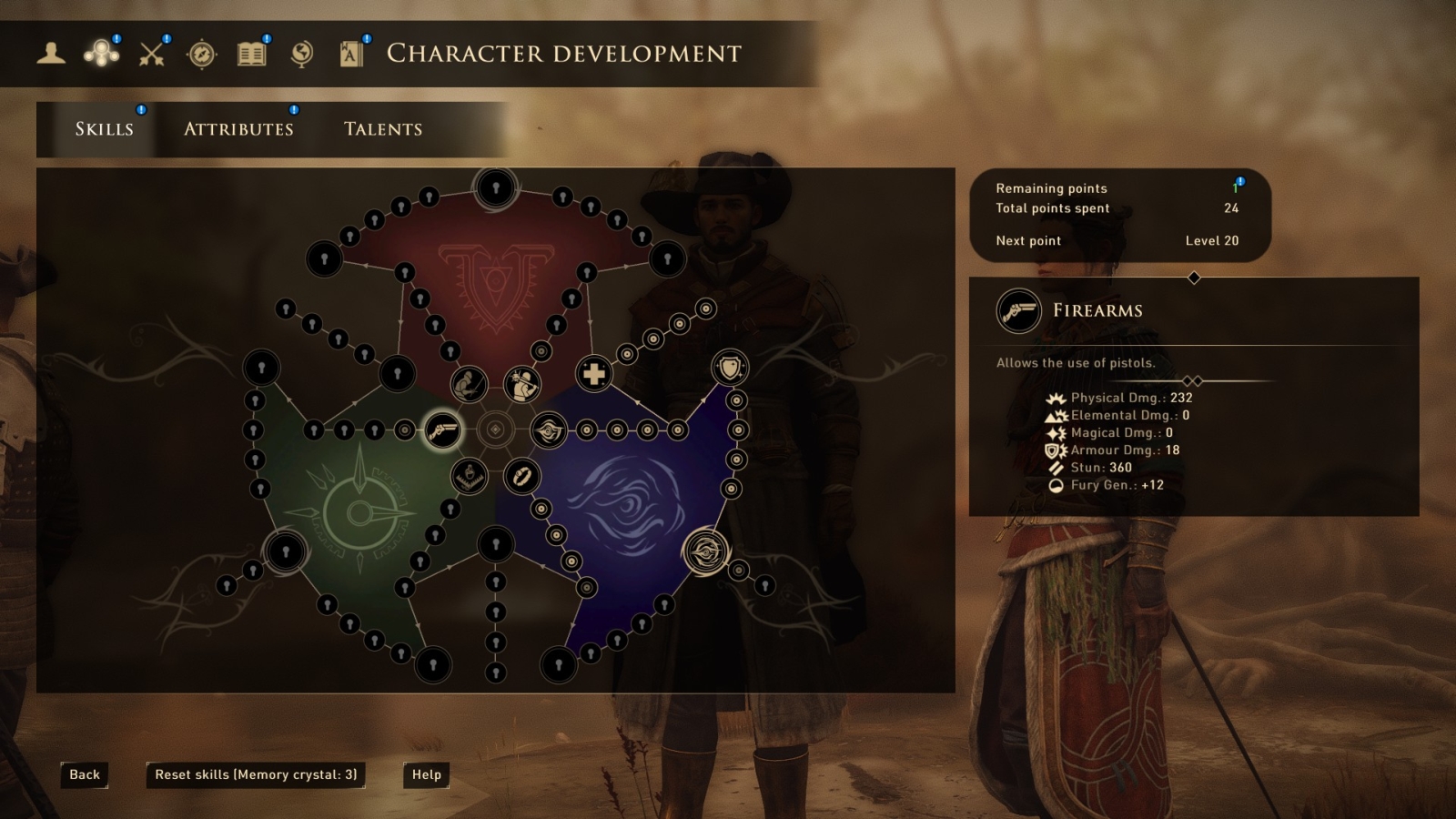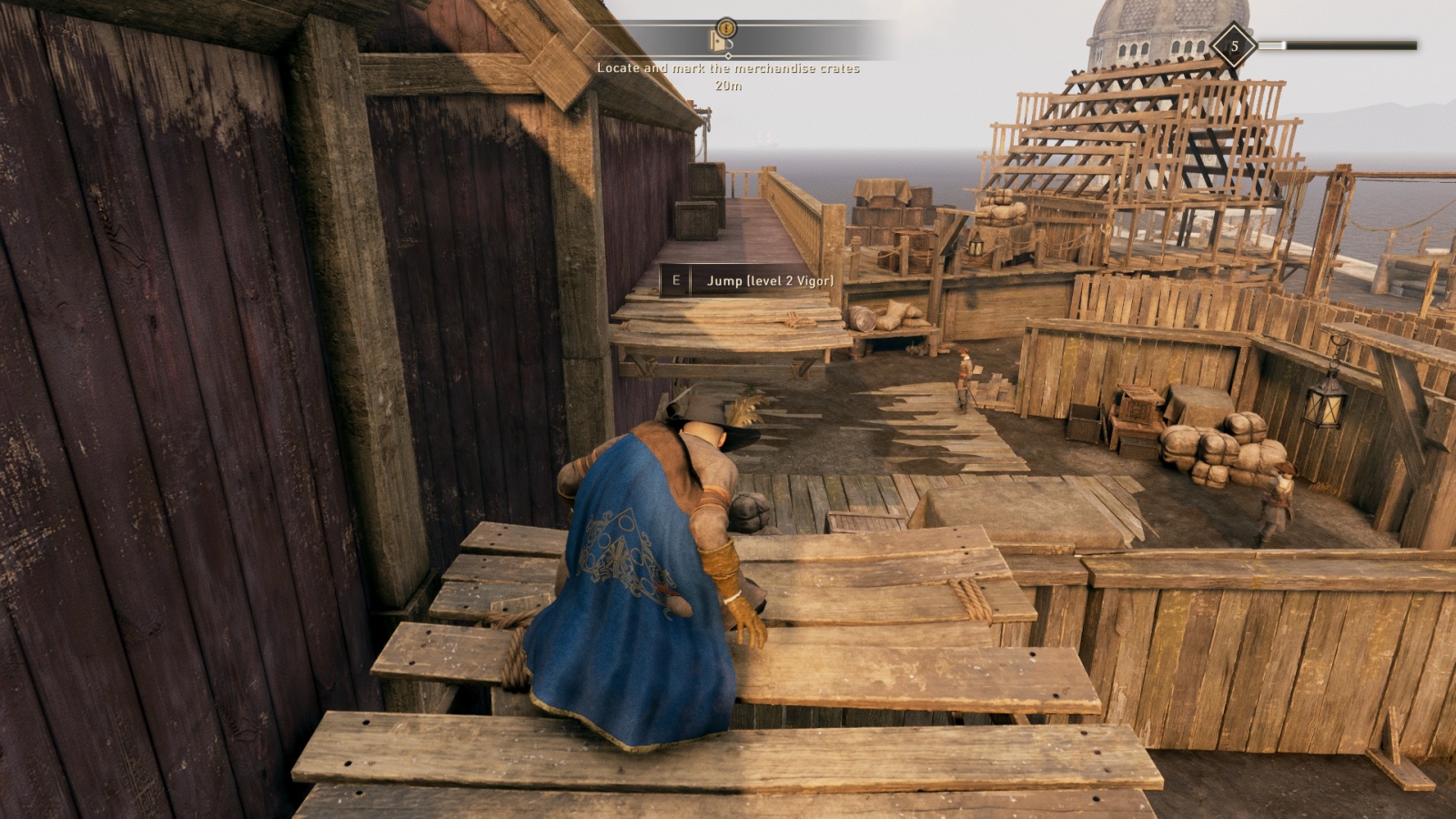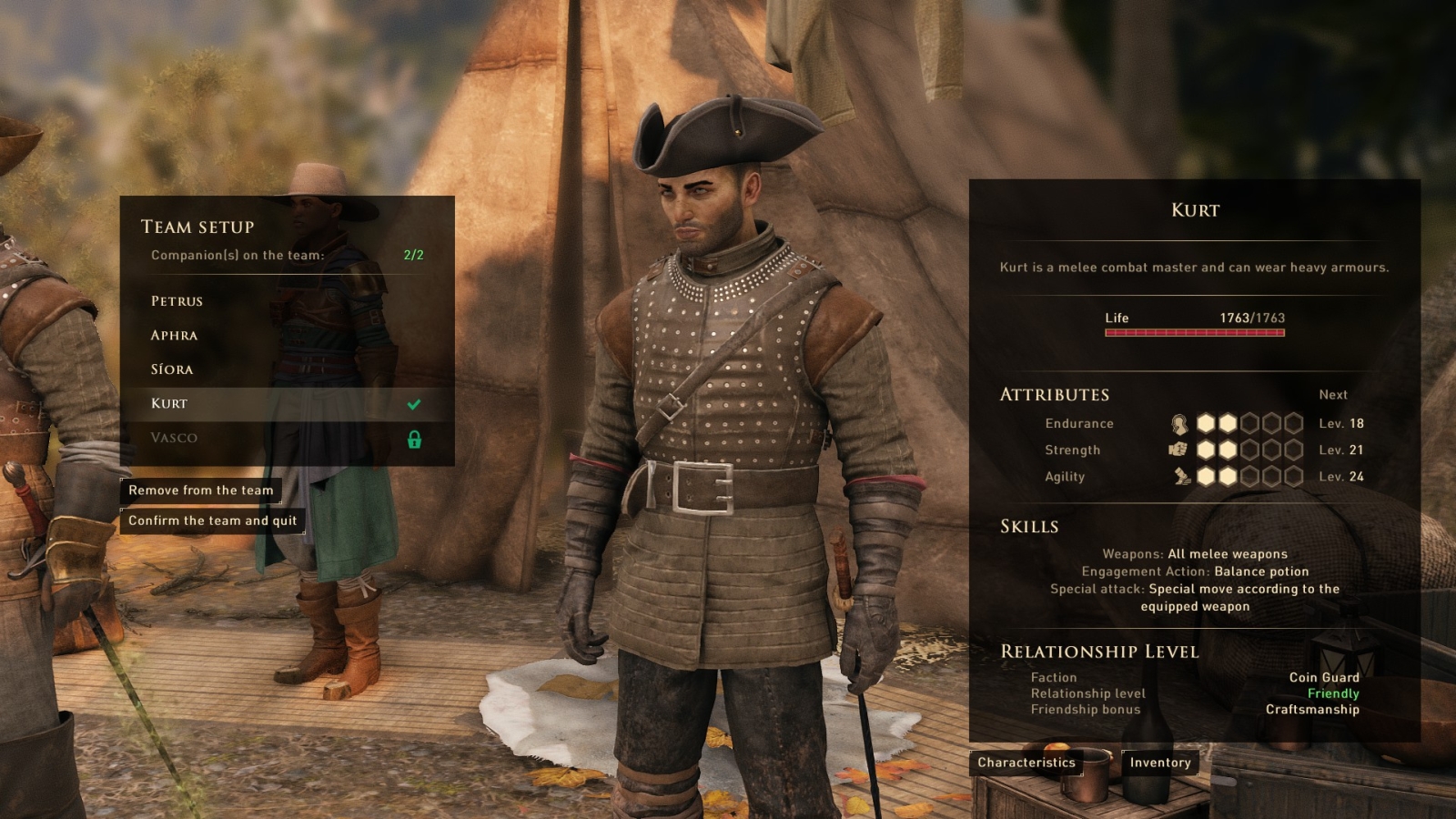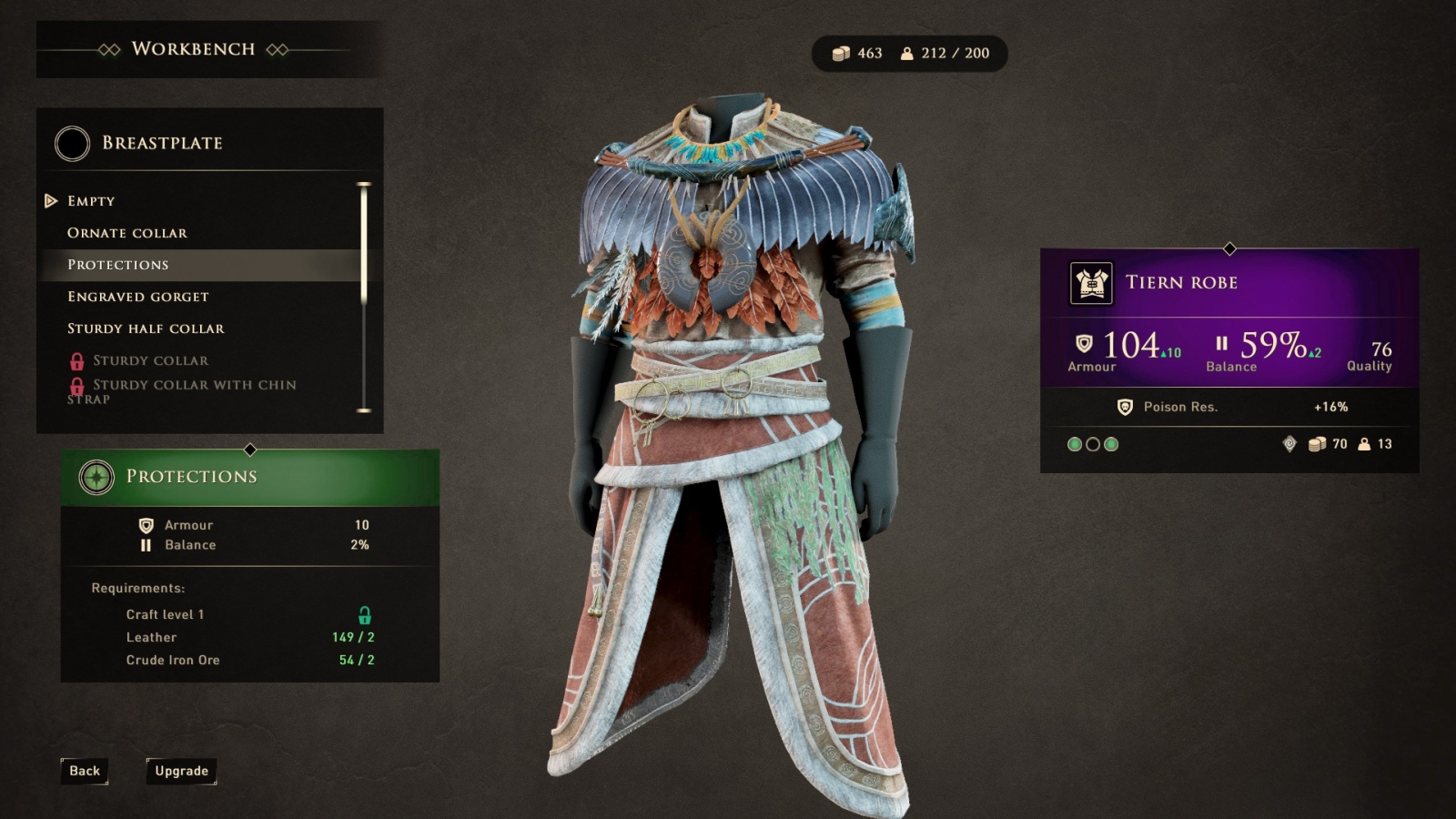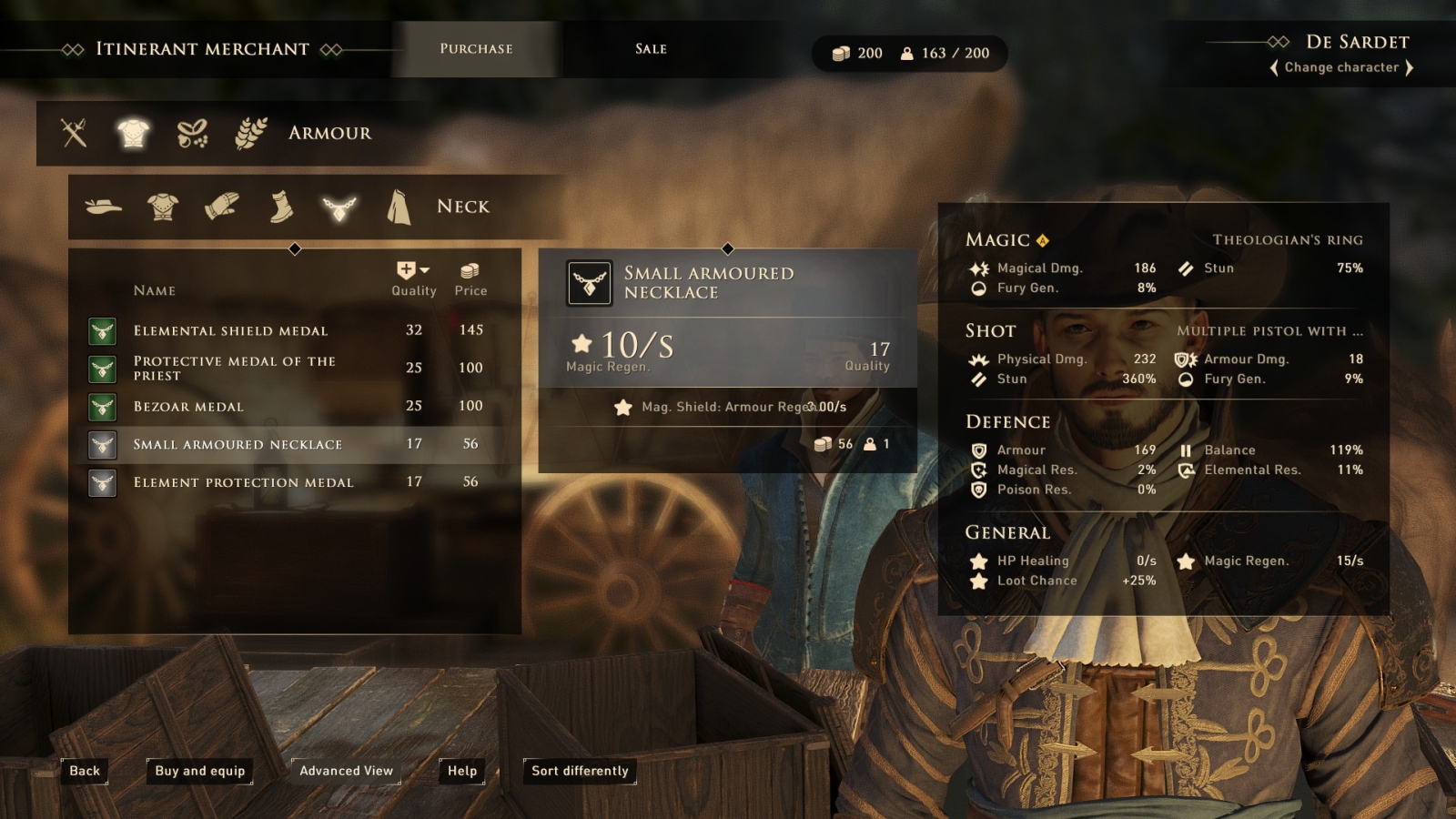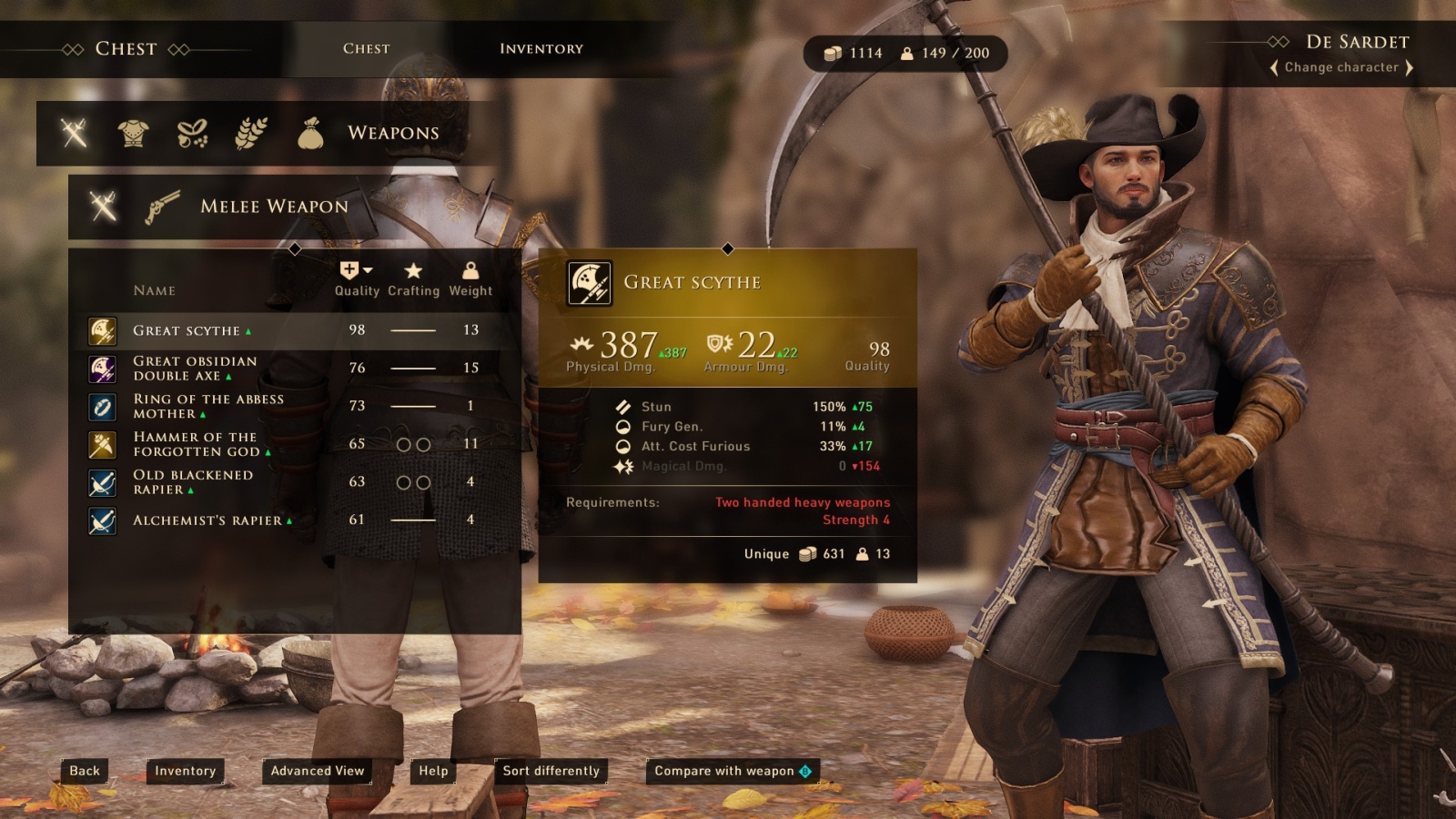
Spiders Games, a Paris-based 40-person strong indie studio behind games like The Technomancer (our review), and Bound by Flame (our review) are back with their newest, and easily most ambitious, creation thus far. Previous titles from Spiders were focused on beautiful graphics and action, but suffered in the story, voice acting, and player agency. With Greedfall the team aims to resolve all of these, as well as set a new bar for their worlds.
Greedfall tells the story of De Sardet, a “legate” (read: Diplomat) who has been given the charge of sailing to the island of Tìr Fradì (pronounced Teer Freedee) with the purpose of discovering a cure to The Malichor — a disease that marks the face with dark tendrils, whitens the eyes to blindness, and ultimately ends in death. As the island is inhabited by “monsters larger than houses,” a savage native population, and several factions each of which with their own agendas, your mission won’t be as straightforward or easy.
After just a few hours, it was very clear that Greedfall is a very different experience than Spiders has ever presented. First and foremost, the voice acting is not only improved, but comparable with any high-dollar AAA game I could name. Better still, there is a far heavier focus on conversation and the interplay between skills, uncovered paths, and other ways you can navigate non-combat interactions. Below you can watch the first hour of the game, and you’ll note that it’s far more focused on exposition and lore than magic and battle. (On our YouTube channel you can also watch the second hour of the game which culminates in the first boss battle.)
Immediately evident is a 17th century Baroque-inspired art style that permeates every bit of Greedfall. European colonial-inspired filigree-filled armor and feathered hats are mixed with the heavy French bascinets and cavalry cuirassiers. Bolt on magic, nautical tricorn hats, and some absolutely gorgeous environments and you’ve got the best looking game Spiders has ever made. The forests and swamps of Tìr Fradì are rich with color and are incredibly dense with foliage, the four large cities are packed to the rafters with detail, and there is plenty of ground to cover. It’s important to note that while Greedfall looks like an open-world title, it is not in the strictest sense of the word. While you can go anywhere at any time (once you’ve discovered it), you cannot simply walk from one end to the other. Transitioning between each area is a loading sequence, making each area a large segment of the overall world. I don’t say that as a knock, as this approach works just fine, but it’s important to temper your land-roaming expectations.
Right out of the gate Greedfall offers more choice than ever before as you’ll choose a sex and between three character archetypes before you set off on your mission. These archetypes aren’t entirely freeform (the magic user automatically has a point in one-handed heavy weapons, as an example) in the beginning, but every point after these set defaults are entirely yours to explore.
Progression in Greedfall is level based, but is also a mixture of skills split into magic, swords, heavy blunted weapons, stasis, traps, and firearms. These branch further into two handed weapons, healing magics, explosives, and environmental powers, just to name a few. Even though you are granted a few skills immediately, there’s no restriction on how you progress from there. Each level grants a skill point that can be spent as you see fit, letting you create a heavy armor wearing mage, an agile dodging two handed axe wielder, and anything in between.
Every few levels, you’ll also be granted attributes and talents. Attributes are split between endurance (max life and balance, heavy armor use), accuracy (firearms and alchemy), willpower (mana pool and spell duration), mental power (spell power and ability to use magic rings), agility (fury generation and sword use), and strength (melee weapons and the ability to use two-handed weapons). These attributes are given out so infrequently that each time you get one it’s agony to decide your overall path.
Equally as agonizing to allocate are talents. Talents are split into six categories — science (crafting potions and explosives), lockpicking, intuition (gathering of ingredients and spotting harvesting nodes), craftsmanship (crafting weapons armor upgrades), vigor (provides contextual prompts that open up new areas like leaping over a gap or walking over a small felled log over a chasm), and charisma (dialog choice chance of success). Again, these are only provided every few levels, so every choice is a critical one.
Fret not if the thought of balancing a limited pool of talents, attributes, and skills gives you anxiety — Greedfall’s puzzles are meant to be solved in a variety of ways. Sometimes charisma checks will provide information you need, other times intimidation or intuition can see you to the truth. You can also use knowledge of science, how things work (craftsmanship), as well as the other skills and attributes to solve puzzles, but there’s also frequently the option to grease an open palm with coin to get the job done. Out in the world, having the ability to deftly leap over a gap might provide a shortcut, avoiding danger in the process, but there’s always a secondary path. I’m reminded of the choices in Eidos Montreal’s Deux Ex Human Revolution — there are more options than restrictions.
As a diplomat, your job after your arrival at Tere Freedee is to meet with the various factions already present on the island and see what they know about the Malichor. Unfortunately not everyone is on the same side. There are five factions on the island — the Nauts, Coin Guard, Bridge Alliance, Thélème, and the Natives. Unfortunately, none of these factions particularly like one another, and in the case of the nature-worshiping Natives, they already openly at war with the Thélème as they are actively trying to convert them to “the light”.
In the beginning of the game, while you are finding your diplomatic footing and haven’t collected many companions, these interactions are pretty easy. Eventually, despite trying to ride the fence, you’ll be gang pressed into making some hard decisions. Without warning you can stumble into situations that will press gang you into choices that might upset one faction or another. The people on your team that align with that faction might also take offense to your choices as well. It’s still very possible, with some forethought, to sequester those people that might be disruptive to your mission to the sidelines, making them all happy. I never did feel like I was in danger of losing any of them, which does strip some of the consequences of choice, but getting their trust in you maxed out yields rewards like a bonus to Intuition, crafting, and your other core skills.
There is one aspect that I wish Spiders had dug into more, and that’s faction armor. There are over 200 pieces of armor, and hundreds of mods you can attach to each falling into the typical MMO color progression. Each breastpiece, however, is tied to one of the four factions. Wearing the right armor allows you to pass unhindered into otherwise faction-restricted areas, but over the course of the 35 or so hours of gameplay, I really only used it a handful of times. Still, it represents yet another option in your toolbox for solving contextual puzzles.
Speaking of MMO, there is one aspect of combat that really raked me raw. In typical MMOs, enemies have a specific area that they patrol, and if you kite them out of that area they “reset”, regaining all of their health and armor, while you are left damage and without any consumables. Unfortunately, and during several boss battles, I encountered this phenomenon. It’s instant frustration and unfortunately isn’t the only hiccup I ran into during my time in Greedfall.
If you read through our reviews for previous titles from Spiders, you’ll note that we encountered a host of bugs in each one of them, and Greedfall is no exception. Mouth movements can sometimes be a little bizarre, I ran across the same face on several people, and there’s the occasional odd flickering or Havok engine physics bugs. The biggest and most prevalent thing that pulls you out of immersion with the game are holes in the game’s NPC AI. It causes people to walk in place and wander around in odd circles with little to do. During one sequence I had to reload the game because I went into a small room to search for hidden loot only to be locked in there as two AI-driven NPCs tried to press into the room as my two companions tried to exit.
I mentioned that this game has top shelf voice acting, but there is one aspect that is sure to get on your nerves. When you are running low on health, or if you are a caster, when you are frequently low on mana, your team members will tell you to drink a potion. Listen buddy — we are 20 hours into this journey, you’ve reminded me several hundred times, so shut up already. For a game with tens of thousands of excellent voice lines, they seem to have recorded about three each for combat.
I’m not somebody who screeches about the so-called “PC Master Race”, though I do enjoy gaming on PC for higher framerate, resolutions, and usually better textures. That said, many games are built for a controller as they, like Greedfall, are being simultaneously released for console as well as on the computer. That said, this game has one of the most painful camera implementations I’ve experienced on a controller. If you check out the first hour video above you’ll notice some wild camera swings and overshooting of my target. I got killed in combat several times and through no fault of my own. All of that said…literally none of these things are true when you transition back to mouse and keyboard. I don’t need to describe the experience on mouse and keyboard as it’s precisely what you’d expect if you’ve played any RPG using those peripherals. I just simply cannot recommend you use a controller to play Greedfall.
There is one aspect of Greedfall that is entirely optional, but does come in handy. There is a tactical combat option in the game that pauses the action to allow you to pick the actions you’d like to take next. That can be triggering a spell, quaffing a potion, unleashing a firearm, dropping a trap, or whatever else you’ve unlocked. More often than not I dispatched my foes in real time, but during boss battles I popped into tactical more than a few times to cool the action.
Speaking of bosses, on more than one occasion NPCs in the game remark that the island of Tìr Fradì has monsters “as big as houses”. While you will encounter a handful of them throughout the game, they are very, very infrequent. I would have liked to tackle a few more of these beasts through the course of my time on the island.
There is an odd thing that may or may not resonate with your expectations of Greedfall — you only control your main character, so you’ll have to rely on the AI to handle their own business. You can eventually get spells that’ll heal your team, but for the most part, you’ll be relying on revival powders to get them back on their feet. If you are a micromanager this might rub you the wrong way, but it forced me to do something that I didn’t intend to do — get comfortable with the close range combat.
You can play Greedfall as a button masher, simply hammering away at your spells and light/heavy attacks, and that’ll get you pretty far, but you are missing out on the depth underneath. Each attack can cause your target to become unsteady. Following that attack up with an additional attack might unbalance them and could cause them to be knocked off their feet. It takes a lot of basic attacks to accomplish this. That said, if you pay attention to the interplay between the types of attacks, their effects, and in what order you apply them, you can shove even the biggest enemy off their feet, leaving them vulnerable. Similarly, each monster has a pool of armor and health. While spells ignore armor completely, they aren’t as powerful as melee attacks. Combining a magic assault to unsettle an enemy, and then closing range to smash through enemy armor with a heavy mace makes every engagement that much more fulfilling. It doesn’t click right away, but once you’ve got a few skills under your belt, the game takes on a very different feel.
I do want to take a moment to address the colonial elephant in the room — the world of Tìr Fradì is straight up horrible. You have one faction actively trying to convert the natives through religion or force, running a direct parallel to America’s own subjugation of the Indian population. As a result, it’s going to push you into situations that are downright uncomfortable. It’s my opinion that this lends to the authenticity of the world Spider has created, it’s bound to rub some people the wrong way. If you find yourself a little itchy about the scenarios you are facing, I think you’ve hit on exactly the feeling Spiders was aiming to evoke. I leave it to you to confront your own feelings on the subject.
On a completely different final note, I do want to point something amazing out — while I did review the game on a 2080 TI graphics card, and it runs like a dream on that card as you might expect, it also ran perfectly on a 1080 TI, and even looked fantastic on a GeForce 980M which is the desktop equivalent of a GeForce 770. The 770 was surprisingly able to run at 1080p and a consistent 30fps with all options maxed. It’s shocking to see that level of tuning on a brand new game, but it’s a welcome surprise when your card is below the minimum specs.
GreedFall
Great
Greedfall is a highly ambitious step for Spiders, and one that shows that they are hitting their stride. With excellent voice acting and gorgeous environments, Greedfall serves as a grand adventure in a genre that is sorely needing a fresh face. There are still some bugs to crush, but once those are gone, only a memorable RPG capable of filling the open world RPG void will remain.
Pros
- Top shelf voice acting
- Combat is deeper than initially appears
- Armor and weapon customization makes a difference
- Infrequent Skills/Talents/Attributes force hard choices
- Great performance on a wide range of hardware
Cons
- Some bugs remain
- Controller support is just terrible
- Voice repetition in combat is severe
- A few graphical wobbles / inconsistencies
- More giant beasts please

